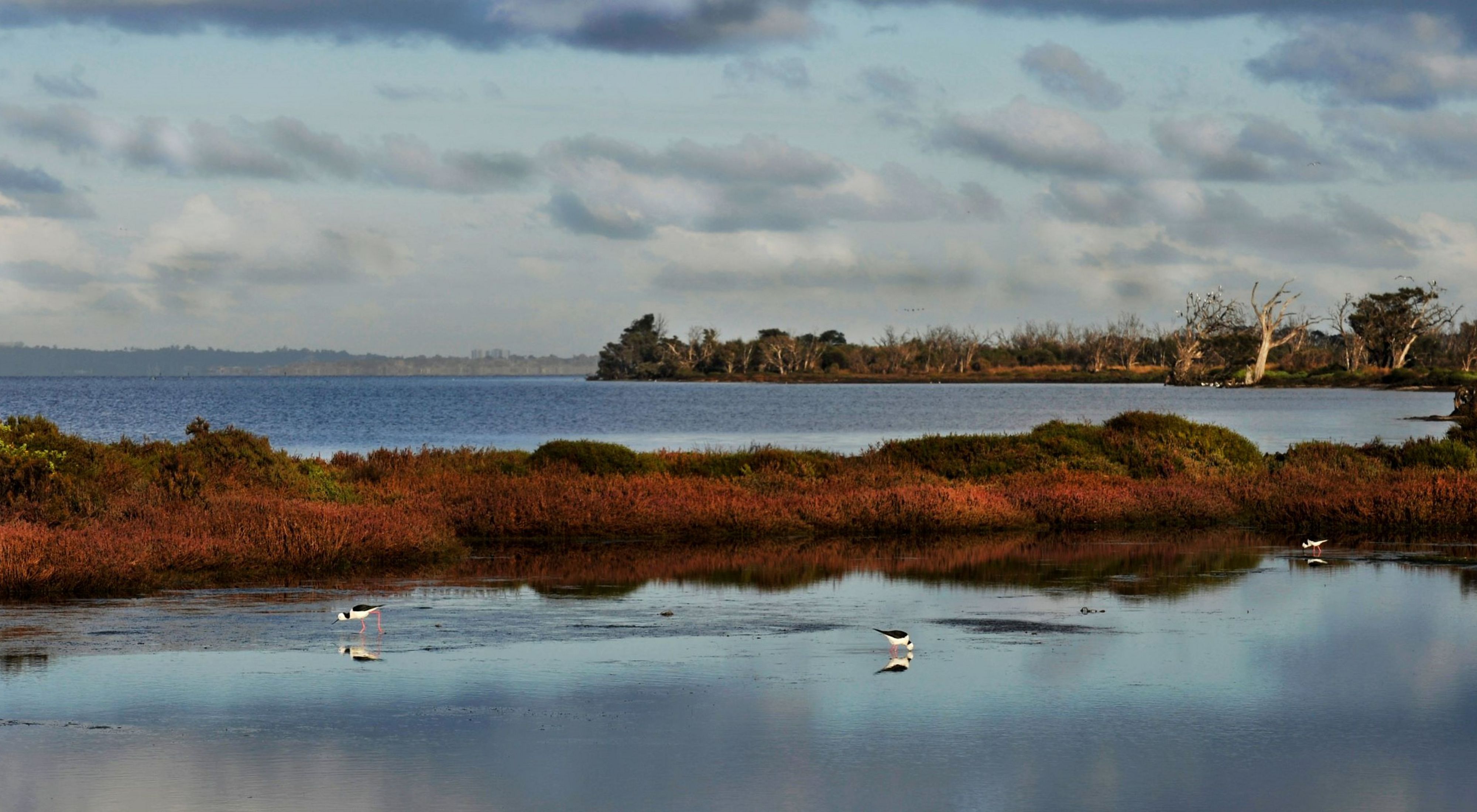Media Contacts
-
Vanessa Billy
Communications Manager
The Nature Conservancy Australia
Mobile: 0478 638 180
Email: vanessa.billy@tnc.org
The Nature Conservancy Australia (TNC) started building two pilot shellfish reefs in the Peel-Harvey Estuary this week, as part of a project working towards improving the health and biodiversity of this iconic waterway.
Two trial reefs will be installed, one in Cox Bay in the Peel Inlet and the other in the Harvey Estuary next to Warrangup Spring Reserve. Together they cover about 600 square metres.
The project is led by The Nature Conservancy, partnering with the Peel-Harvey Catchment Council. It has been generously supported by the Alcoa Foundation, which to date has provided $1.7M, with additional support provided by the Western Australian Government’s State NRM Program.
Building the trial reefs follows nearly five years of extensive research and feasibility work.
If the trial reefs prove successful, they will be followed by a series of larger reefs planned for installation later this year with funding from the Australian Government.
The Nature Conservancy Oceans Project Coordinator for the Peel Region, Dr Richard Campbell, said shellfish reefs were once abundant throughout the bays and estuaries of southern Australia but had largely been wiped out since European settlement. This makes them one of Australia’s most critically endangered marine ecosystems.
“Shellfish reefs are highly effective at restoring the health of our stressed bays and estuaries and that is what we are hoping will happen here,” Dr Campbell said.
“They create habitat for a range of other marine species, boost local fish and crustacean stocks, and improve water quality due to their natural filtration power.”
Locally-sourced limestone will be laid on the estuary floor over the next week to construct the reef base. Divers will then carefully ‘seed’ around two million mussels onto the rocky reef, kick-starting the restoration process. Over time, they will create a living reef ecosystem that will further attract other shellfish and a diversity of marine life.
Dr Campbell said it was an exciting step forward in the long-running project and thanked the many organisations and people involved to date.
He said the two sites had been chosen carefully through evidence built from underpinning scientific studies, restoration suitability modelling and wide consultation. This included engagement with the 2 local community and regulatory bodies to ensure the reefs would not disrupt existing waterway users. The Bindjareb Noongar Traditional Owners have been involved with the project design and location selection, and the local Bindjareb Indigenous Rangers have been heavily involved in the community engagement elements of the project.
“Installing these pilot reefs is the culmination of considerable work involving the Peel-Harvey Catchment Council, local community, Bindjareb Noongar community and government agencies, who have all worked together to improve the health of their local waterways,” Dr Campbell said.
“The community has been heavily involved – the mussels that will be placed on the reefs include those grown by community volunteers as well as those bred by our commercial partner Harvest Road Oceans.”
Alcoa Foundation Australia Lead Suellen Jerrard praised The Nature Conservancy and the many other organisations and individuals involved in reaching this important milestone, saying it highlighted a growing awareness in the importance of caring for our local waterways.
While the reefs are designed to contribute to greater biodiversity and provide food and habitat for numerous marine animals, Dr Campbell stressed that all users of the Peel-Harvey Estuary should abide by the general advice from the WA Health Department and refrain from consuming recreationally-harvested shellfish from estuaries and rivers in the south-west region of WA.
More information
The Nature Conservancy is a global conservation organisation dedicated to conserving the lands and waters on which all life depends. Guided by science, we focus on getting things done efficiently and with the greatest positive impact for conservation. We’re a trusted organisation working in more than 70 countries and territories around the world on innovative solutions to our world’s toughest challenges so that nature and people can thrive together. To learn more about The Nature Conservancy in Australia, follow us on Facebook.
